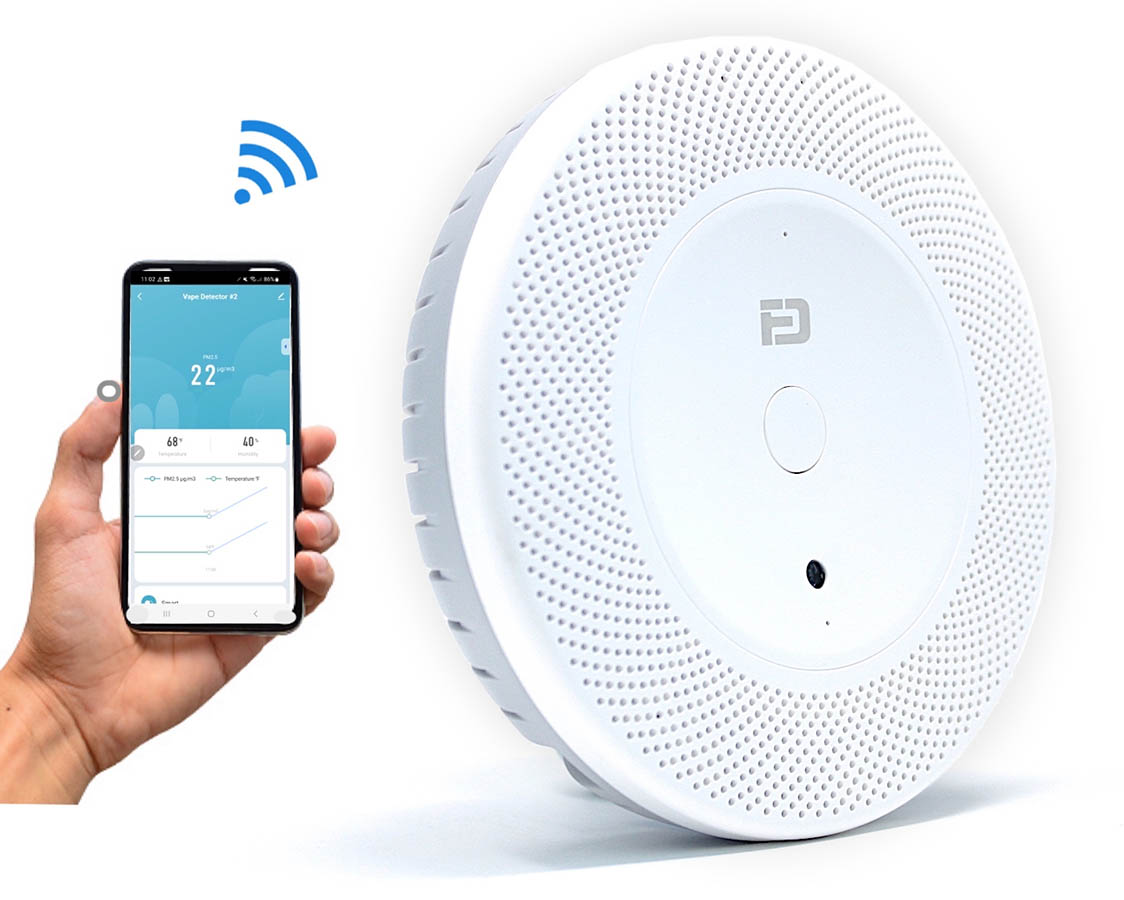Electronic cigarettes, or vaping has become more popular in recent times leading to concerns about their security and health. Vaping can lead to smoke inhalation, which can be particularly hazardous when it is in indoor spaces such as schools, homes and offices. To combat this problem, many people are using vape detectors, that can detect and monitor smoking in indoor areas. This article will examine the various types of vape detectors as well as their functions and the way they can be used in different environments.

Vape detectors, which utilize sensors to detect particles and vape smoke that is in the air they are electronic devices. They are intended to provide a quantitative analysis of indoor vape smoke, which could help in enforcing no-smoking policies as well as identifying areas in which people could be using vapes. There are many types of vape detectors on the market that are suitable for use at home, in schools, and other public spaces.
Vape detector use are becoming increasingly popular among families who want to protect their children from the harmful effects of secondhand smoke. The detectors can be discretely placed in living areas, where smoking could occur. They can be fitted with a wide range of sensors, such as the PM2.5 sensor, which detects particles that are released by vaping devices. Vape detectors that are suitable for use at home come with smartphone apps to warn you when vaping been detected.
Schools are another place where vape detectors are employed to deal with the problem of indoor vaping. Many schools have adopted no-smoking guidelines, as well as prohibiting the use of vaping devices. Vape detectors are a great tool to enforce school rules and help identify which students are smoking. They are located in areas in which vaping could occur such as hallways restrooms and locker rooms.
Vape detectors for schools tend to be superior to those made to be used at home, as they must cover larger regions and differentiate between vaping and other types of smoke or particles. The sensors comprise a mix, including laser-scattering sensors, that detect vaping. They offer accurate readings. Some models distinguish between various vaping devices, like e-cigarettes and vaping pen.
Vape detectors are used in hotels, casinos and other public spaces, such as schools, workplaces and in private homes. These detectors provide a safe healthy and safe environment for guests and employees. They can monitor the indoor air and can detect vaping. They can be installed in areas like lobbies or conference rooms. They also provide data about the quality of indoor air.
One of the most important attributes of vape detection is their capability to make use of laser scattering technology to detect vaping particles. The technology is able to detect tiny amounts of vape smoke. The laser beam is used to determine the scattering of light caused by particles in the air. These devices allow vape detectors to provide highly accurate readings of indoor air quality and pinpoint areas where vaping occurs.
Vape detectors for homes come with an additional feature: they can be connected to smartphone apps which send notifications and alerts in real-time when vaping has been identified. This is particularly useful for parents who wish to keep track of the indoor vaping habits of their children or school administrators, who wish to be notified when students use. Some vape detectors also come with cloud-based data storage, which can be helpful to monitor trends in indoor air quality and identifying areas that require more focus.
Vape detectors provide a powerful method to detect and monitor indoor vaping in the homes in schools, homes, and other public spaces. They use a variety of technologies and sensors that give accurate readings on indoor air quality. They are also linked to smartphone apps for immediate alerts.
Vape detectors guard those who are exposed indoor air pollution. They reduce distractions so that we can concentrate on maintaining and monitoring the purest possible air quality. Although the technology is fairly new, the effects are still not fully researched There is a consensus that these devices can enhance the quality of indoor air as well as overall health. The technology of vape detectors has been proven to be highly efficient in detecting harmful substances like carbon monoxide, ultrafine particulate material (PM2.5), and volatile organic compounds. Vape detectors are able to identify vape products with greater precision than ever before. Vape detectors are a positive improvement in terms of security and health. This innovative technology will continue to be utilized to a greater extent, and could one day help protect our family members from the dangers of smoking secondhand cigarettes or smoking vapes in our homes.